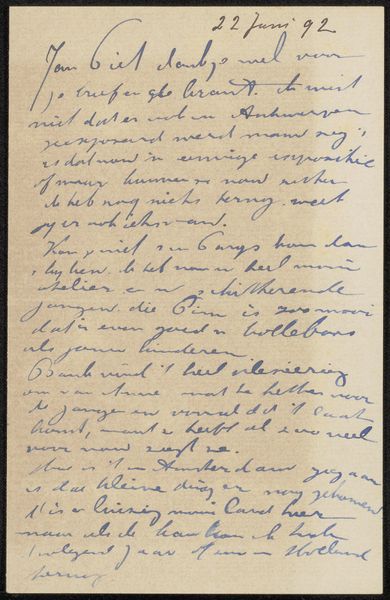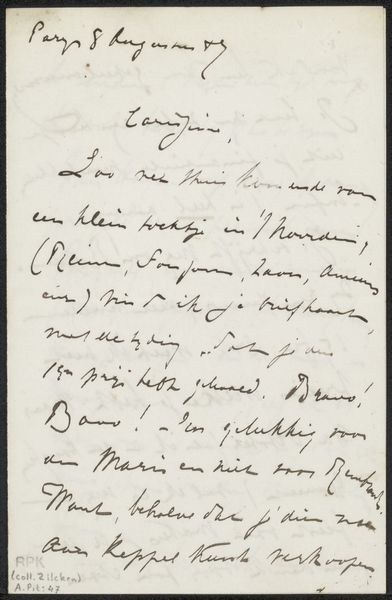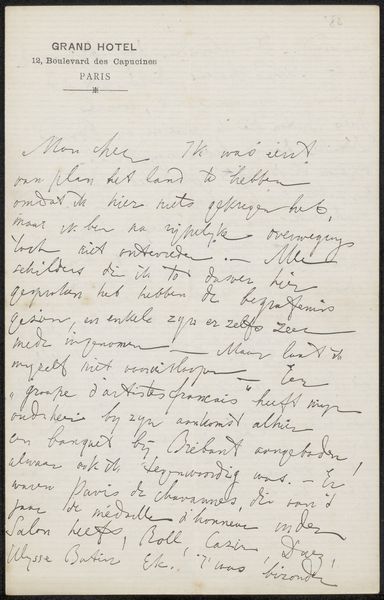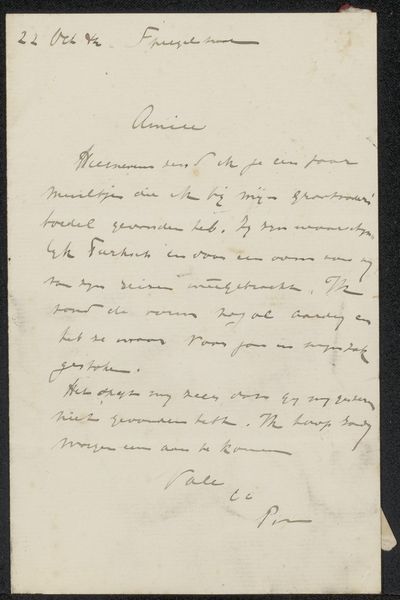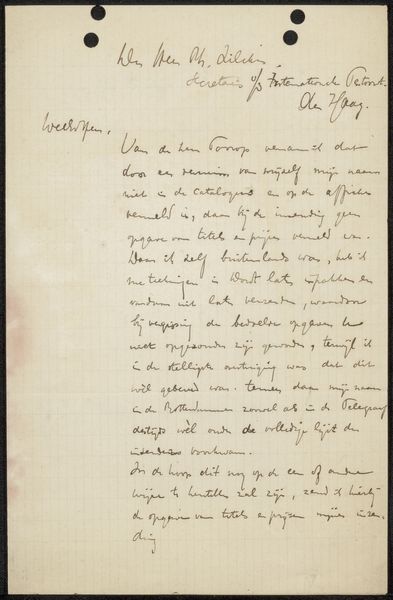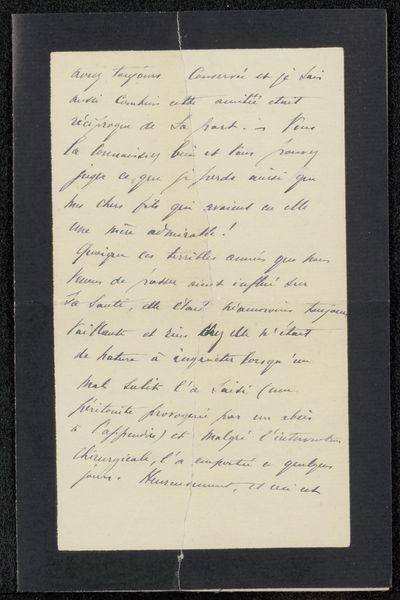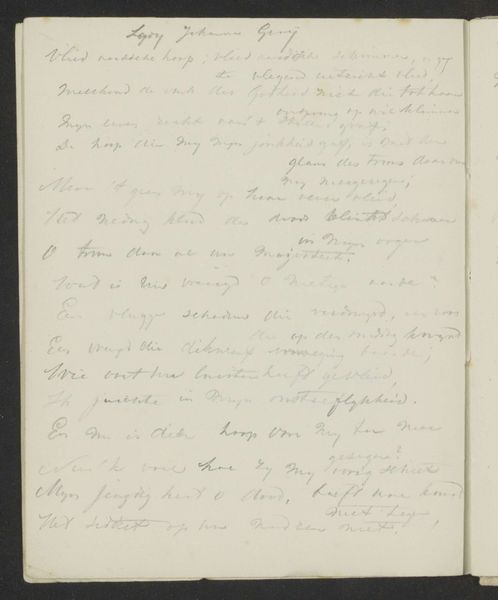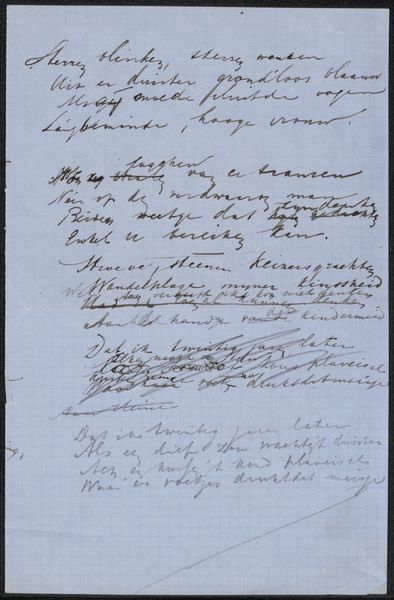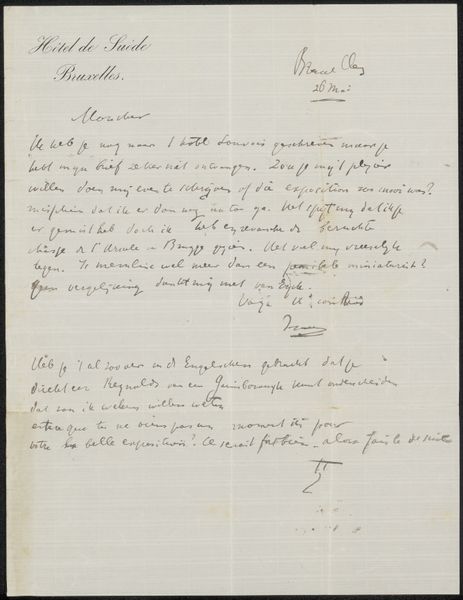
drawing, paper, ink, pen
#
drawing
#
paper
#
ink
#
pen
Copyright: Rijks Museum: Open Domain
Curator: Here we have "Brief aan Philip Zilcken," a drawing created sometime between 1870 and 1930 by Adriaan Pit. It's composed with pen and ink on paper. Editor: My first thought is that this seems surprisingly intimate, something revealed. The spidery ink strokes and warm, aged paper give it such an individual feel. Curator: Precisely. Its materiality conveys its significance beyond mere information. Consider the carefully chosen cream paper stock—it supports the ink beautifully, accentuating the elegant flourishes and abrupt stops that shape the sentences. Editor: The subject matter has a huge influence, too. A letter from Adriaan Pit... Zilcken was a prominent art critic of the era, deeply embedded in artistic and literary circles. Was Pit trying to court influence, or was their exchange purely for matters of aesthetic judgment? Curator: The absence of highly rendered detail forces us to confront the writing. We examine the gestural quality, the weight of the line. Note the variance in pressure, indicative of mood and the urgency that propels hand to write! Editor: It is the context around it that has the biggest pull. Zilcken played a crucial role as one of the founders of the *Maatschappij tot Bevordering der Grafische Kunsten* around that period, promoting the graphic arts and artists' recognition during the Dutch art renaissance! Curator: While context surely enriches, it's the composition—the almost calligraphic quality of the writing, combined with the intentional, almost haphazard, placement of text on the page—that holds primary aesthetic weight. The act of forming the letter transforms its literary value! Editor: What about what Adriaan is writing in this correspondence? Could there be valuable knowledge about art and society in those lines? These tangible historical connections, offer far greater insight than mere appreciation. Curator: True, the interpretation of its content is definitely exciting. Together, those dimensions allow us to consider form and context, and come to a unique understanding of art’s complexity! Editor: Absolutely, recognizing those nuances certainly highlights a fascinating interaction from the era.
Comments
No comments
Be the first to comment and join the conversation on the ultimate creative platform.
